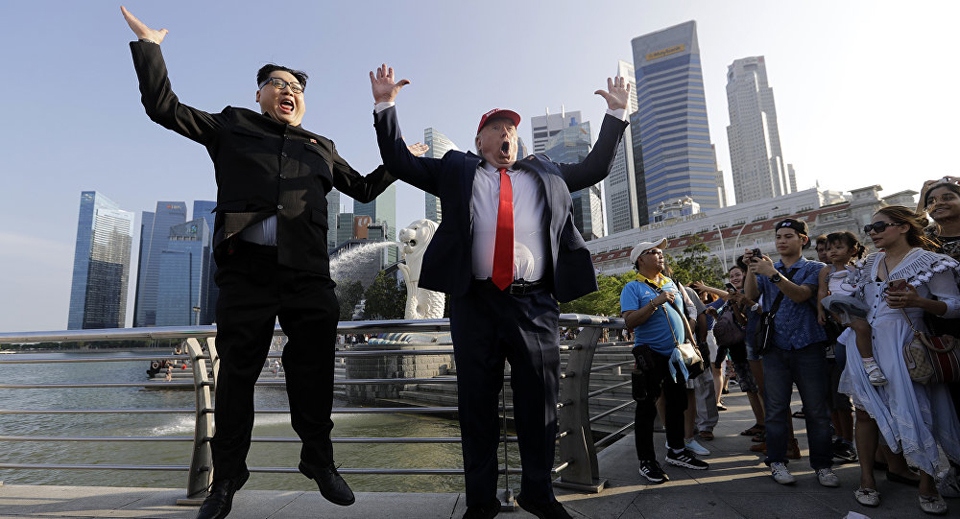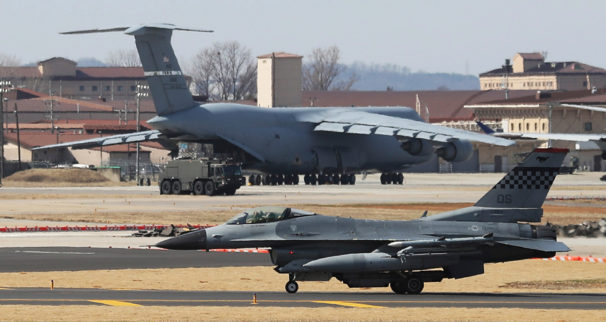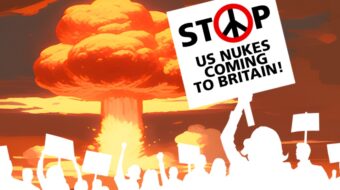
First it was on, then it was off, and now it’s on again. Tomorrow, President Donald Trump and North Korean leader Kim Jong Un will finally meet in Singapore for their historic summit. The meeting, which will be the first time that sitting leaders of the two countries have ever met face-to-face, has so far been long on hype and short on details.
Just over two weeks ago, the summit was cancelled, on Trump’s orders, over supposed North Korean “hostility” toward Vice President Mike Pence. At the time, this paper reported on how talk of implementing a “Libya model” in North Korea by Pence, National Security Advisor John Bolton, and other administration officials had poisoned the atmosphere for any summit success. The Libya model refers to the pledge by that country’s leader, Muammar Gadhafi, to eliminate his weapons of mass destruction programs in 2003 in exchange for a security guarantee. The outcome of that “model”? A few years later, Gadhafi was overthrown and killed by U.S.-backed rebels.
Now, it seems that the Libya bluster and Trump’s dramatic summit scuttle was all part of a ruse, a bargaining tactic by a president who envisions himself as the master negotiator. Through his erratic behavior, he aims to keep the world guessing as to what his next move might be or what his real intentions are. It is all meant to give the appearance of some grand plan, a coherent and well-executed strategy. In reality, it is likely some combination of the militarist machinations of his foreign policy team—the “war cabinet”—combined with his own reckless bravado.
Practically, it means that the outcome of his meeting with Kim is quite unpredictable. As this article goes to press, it is being reported, for instance, that Trump has changed his schedule and plans to leave Singapore early. Just what that means is anyone’s guess and illustrates the futility of trying to ascertain in advance what might happen. Any number of possible scenarios could play out—from a simple agreement to continue talks, to total breakdown and new threats of war, to an actual move toward lasting peace. (The record of Bolton, Secretary of State Mike Pompeo, and the rest, however, don’t leave that third option looking too likely.)
Rather than speculating in too much detail on what is likely, perhaps instead we might suggest what would be the best outcome from this meeting—for the people of the two Koreas, those of the U.S., and the rest of the world.
Here are a few big points that, if achieved, would really move the dial toward lasting peace:
– Official end to the Korean War. The conflict that ended in a ceasefire in 1953 has never really been concluded with an official treaty. For 65 years, a technical state of war has continued to exist between North and South Korea. The two countries have made clear that they are both ready to foreclose the possibility of further fighting between them, and China would no doubt be down to sign off on a treaty. That leaves the U.S. under Trump as the last outlier. Clearing this hurdle would open up possibilities for more fruitful negotiation on other fronts.
– Total de-nuclearization of the entire Korean peninsula. Most discussion around nuclear weapons when it comes to Korea is focused on the North’s history of provocative atomic detonations and threatening missile tests over the past several years, and rightfully so. Decades of open hostility on the part of the U.S. has certainly given the North’s leadership reason to keep defense at the top of mind, but its game of nuclear brinksmanship just plays into the hands of militaristic elements in the U.S. defense establishment and escalates the danger of war. The North should give indications that it is serious about embarking on a program of real de-nuclearization, including allowing international inspections. Of course, the quid pro quo has to be that the United States resists the war hawk lobby at home and sticks to the policy of keeping its own nuclear warheads out of South Korea, something it has done since 1991.

– Withdrawal of U.S. troops from South Korea. If Trump wanted to send an unmistakable signal to Kim that he truly desired peace and would guarantee the North’s security, he could announce the total and complete withdrawal of U.S. military forces from the South. Nearly 30,000 American soldiers remain stationed just across the border from North Korea, poised to strike if ordered to do so. The New York Times reported in early May that Trump had asked the Pentagon to draw up options for reducing troop strength there, but Bolton countered that any possibility of the U.S. leaving South Korea was “utter nonsense.” It does indeed seem highly improbable that a total withdrawal would happen, especially considering that the U.S.’ presence serves not only as a warning to the North but also as a base just a few hundred miles from the Chinese coast.
– Normalization of diplomatic relations between the U.S. and DPRK. To ease the path for ongoing negotiations and to ratchet down tensions between the two countries, full diplomatic recognition and the eventual exchange of ambassadors would seem to be a no-brainer. It would allow for the establishment of permanent and formal channels of communication and the possibility of ending sanctions against the North.
– Non-interference in the affairs of both Koreas by the U.S. North and South Korea have proven themselves quite capable of handling their own business, as shown by the efforts of the South’s President Moon Jae-In and the North’s Kim in recent months. If the U.S. is to have a role in Korea, it should be as an honest participant in regional forums and discussions, such as the previous Six-Party Talks, and not as an occupying military force or a veto on South Korean diplomatic efforts.
This wish list features just a few of the big points that would make the Trump-Kim summit a success from the perspective of international peace. Trump himself is wildly unpredictable, and some speculate he’s so eager to win accolades that he might agree to any or all of the above.
For its part, the North Korean side would of course be wise not to forget about the Libya model. Those who most have Trump’s ear on international affairs, such as Bolton, have never considered Libya threats as mere bargaining bluffs; for them, “regime change” on behalf of U.S. imperialist interests remains as much a part of the playbook as ever. And Pompeo is already giving signals to the press not to expect too much out of the meeting, at least not right away.
If some progress is achieved in Singapore tomorrow, it should indeed be welcomed. Holding your breath waiting for a dramatic breakthrough, however, might not be advisable.












Comments